This review was originally published in Nathaniel's column at Towleroad...
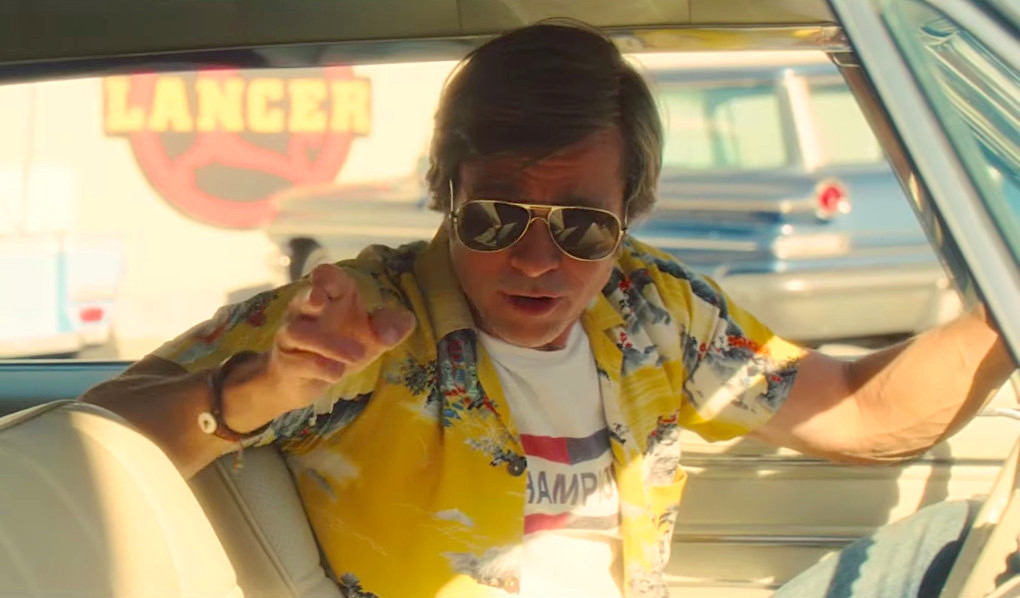 We want you... to see this movie so we can talk about it.
We want you... to see this movie so we can talk about it.
[Spoiler-free review] Here’s the best way to know that you’re inside an auteur’s movie. It’s impossible to imagine it having been made by anyone else. Quentin Tarantino’s 10th feature film (creatively referred to as his 9th, presumably to give him a retirement out after his various “I’ll quit after 10 films!” proclamations) is a fable about Hollywood. The movie begins in 1968 and ends in the summer of 1969 when the very pregnant actress Sharon Tate, Roman Polanski’s new wife, and her house guests were all brutally murdered by the Manson family. Any number of filmmakers could have made a movie about that infamous year in California, but only Tarantino could have made Once Upon a Time … in Hollywood.
Historical events, real ones at least, have never been as sacred to Tarantino as the history of the movies. Whenever he’s dipped into “history” -- Django Unchained, Inglourious Basterds-- it’s been as emotionally loaded prefab worlds from which to spin his own idiosyncratic yarns. In this regard Once Upon a Time is no exception. To this viewer, though, his latest movie feels closer in spirit to Pulp Fiction...
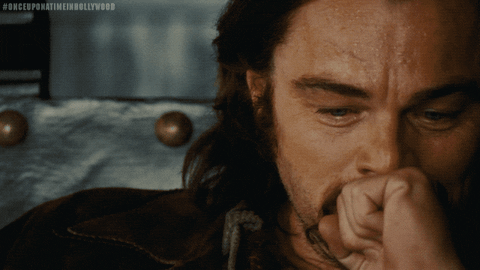 "Rick fucking Dalton" -- Rick Dalton
"Rick fucking Dalton" -- Rick Dalton
It’s even tempting, though inaccurate and glib, to describe Once Upon a Time … in Hollywoodas a movie length riff on that restaurant scene in Pulp Fictionfrom the POV of the waiters “Marilyn” and “Elvis”, what with all the famous actors masquerading as other famous actors.
Though we spend intermittent time with the then-rising star Sharon Tate (Margot Robbie, luminous if not much more given the confines of the role) she’s more decor than subject. The story is about Tate’s fictional next door neighbor, TV star Rick Dalton (Leonardo DiCaprio, in his best star turn since at least The Departed) and his stunt double Cliff Booth (Brad Pitt, still a f***ing movie star!). Dalton and Booth are minor Hollywood players now, their glory years behind them. Dalton has been reduced to guest star appearances as the “heavy” on various TV shows and Booth rarely works as a stuntman, earning his meager living as a kind of hired-friend. Booth’s primary work is as Dalton’s driver.
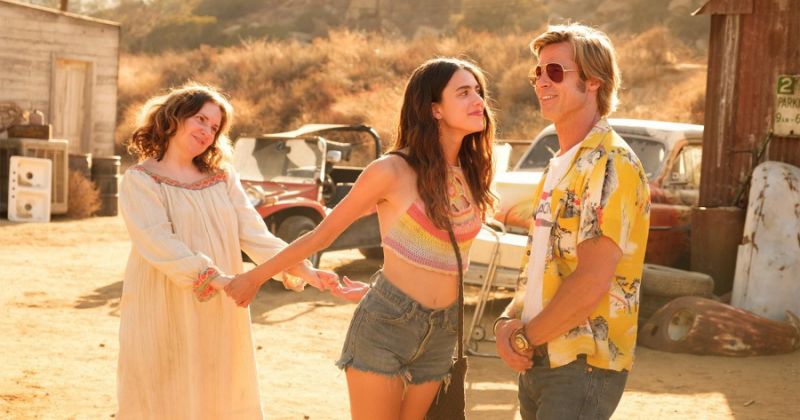 Lena Dunham, Margaret Qualley, and Brad Pitt at the Manson Family ranch... this sequence is practically its own mini movie.
Lena Dunham, Margaret Qualley, and Brad Pitt at the Manson Family ranch... this sequence is practically its own mini movie.
We spend a lot of time with the two men in the car, driving to and from the star’s home. Among the many glorious and funny visual touches (Barbara Ling is the production designer) is a cutout detail from a billboard or movie poster, bearing what I thinkis bad painting of Rick Dalton’s face, that’s used to mark Dalton’s reserved parking spot... at his own home. Booth’s junkier car gets the non-marked spot right next to it.
The first time I went to Los Angeles alone in the early Aughts, I didn’t rent a car. The mistake -- which I chalked up to living in New York City where everyonewalks -- was readily apparent. There were few pedestrian friendly sidewalks. People were staring. Every subsequent trip has involved lots of time in cars, rentals or ubers. Sometimes the distance between where you’re coming from and where you’re going is quite short, but try telling that to the traffic. Time stretches on indefinitely. My mind kept drifting to all that vehicular stasis during the movie’s longueurs. ‘Where is this picture going and why is it taking so long to get… Ooh, this scene is fun!’
Once Upon a Time’s connective tissue between its episodes is spent on the streets and highways of Los Angeles, with Booth chauffeuring us, or Dalton, or, in one particularly memorable foot-fetishist-friendly scene, Manson-acolyte “Pussycat” (Margaret Qualley), through the mythic town. Once Upon a Time... has been described as a “hangout” movie which is the nicest possible way to refer to its indulgent nearly 3 hour running time… and perhaps the most accurate, too.
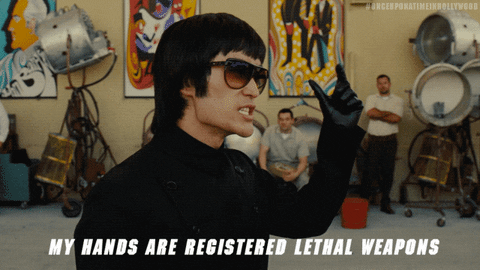 Mike Moh is hilarious in what we hope is a star-making appearance as Bruce Lee
Mike Moh is hilarious in what we hope is a star-making appearance as Bruce Lee
Still, unlike the frankly tiresome running times of Tarantino’s recent films (I absolutely cannot with The Hateful Eight), Once Upon a Time is a surprisingly pleasant way to while away three hours, barring two politically questionable sequences. One thankfully brief scene that we wish had been cut makes a kind of joke out of violence against women (a strange misstep given the sympathetic treatment of the Tate subplot). The other pits Bruce Lee (a hugely entertaining cameo from Mike Moh) against Booth in a dick measuring fight that’s half performative for the crew on the set of one of Dalton’s shows. This fight scene narratively serves to demonstrate to the audience how formidable Booth is since we only know of him up this point as a washed-up stuntman. There was surely a way to set that up without the ludicrous suggestion that he’d be Bruce Lee’s equal (my plus one at the screening, a longtime cinephile friend, singled out the scene as his least favourite, “As a minority, I get so sick of ‘Mighty Whitie!’”).
Those two scenes aside, the movie is funny, visually memorable, and even kind of sweet, which is not typically an adjective anyone would dole out to a Tarantino picture.
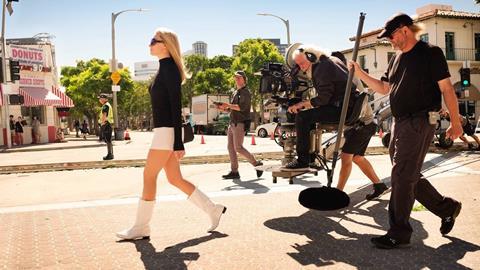 Margot Robbie strolling through LA as Sharon Tate
Margot Robbie strolling through LA as Sharon Tate
Dalton is briefly lured away to Italy snag the leading roles he can’t get in Hollywood (Al Pacino has a lot of fun in his cameo doing the luring). Yet the bulk of the picture concerns the industry town itself and its tangled mix of haves (Sharon Tate and Roman Polanski), hangers on (Emile Hirsch as Tate's close friend/former lover Jay Sebring), used-to-haves (Dalton) and have-nots (Booth). All that plus the fringe dwellers (the Manson family) who are geographically close but live in an entirely different world.
Though several scenes and glorious recreations of historic movie marquees remind us of Tarantino’s love of cinema history, the movie’s stealth subject appears to be the loneliness of stardom, and its stealth tribute is to 1960s television. When Sharon Tate wanders the town stopping to check out one of her own movies, she feels enormous pride when the audience reacts well to her performance. Yet in every sequence in which she looks radiantly happy she is notably alone. Later, it’s weirdly moving (and funny!) when Dalton is all-too excited to watch an episode ofFBI he guests on with Booth, who appears to be his only friend. In the best and lengthiest Dalton-specific episode we spend a day with him on set where he strugglnes with his dialogue and ridicules himself alone in his trailer before meeting a child star (Julia Butters, a major scene-stealer) who inspires him to up his game.
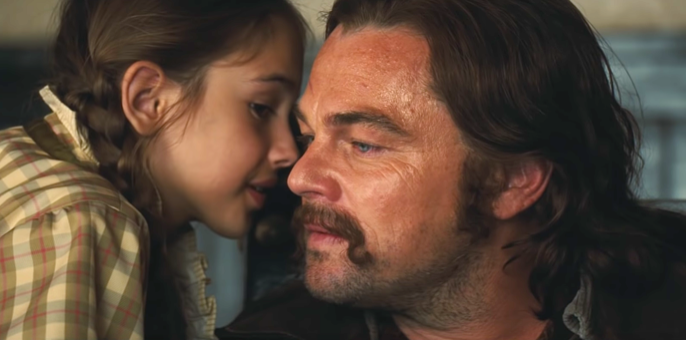
The scene that, to this non-Angelenos, works to signify this film experience best as a whole, complete with all of its meanderings, comes early. At first it plays like ‘why didn’t you cut this?’ nothingness. The scene is a solo affair with no obvious narrative purpose. We’re in the car with Booth as he drives from Dalton’s expensive home, tearing through the streets of LA like he’s filming a stunt-driving scene. This indulgence, which must only be for atmosphere, morphs into something moving and fun and hazy-dreamy (cinematography by three time Oscar winner Robert Richardson) as the road stretches on and historic sites whiz by. Eventually we end up at the legendary Van Nuys Drive In. Our destination is, surprise, not the historic movie site, but a vacant lot behind it.
There Booth lives in a tiny trailer that he shares with his female pitbull Brandy (arguably the film’s most entertaining character). She waits obediently on the couch for her meal. One can of dog food slides grotesquely and sloooowwwly from its can -- falling into its bowl with a memorable gelatinous plop. Then a second, of a different flavor but no less revolting color-- lands on the top, splattering bits to the floor. She licks her lips in anticipation, comically. Time keeps stretching out. Booth/Tarantino isn’t done preparing this meal just yet. In a surprise twist Booth pulls some dry food from the cupboard, sprinkling it randomly and chaotically on top. It’s all too much. It shouldn’t be delicious. Maybe it’s not but we’re hungry. Brandy is finally given the sound cue, and leaps from the couch.
What a mess but, also, what a feast!
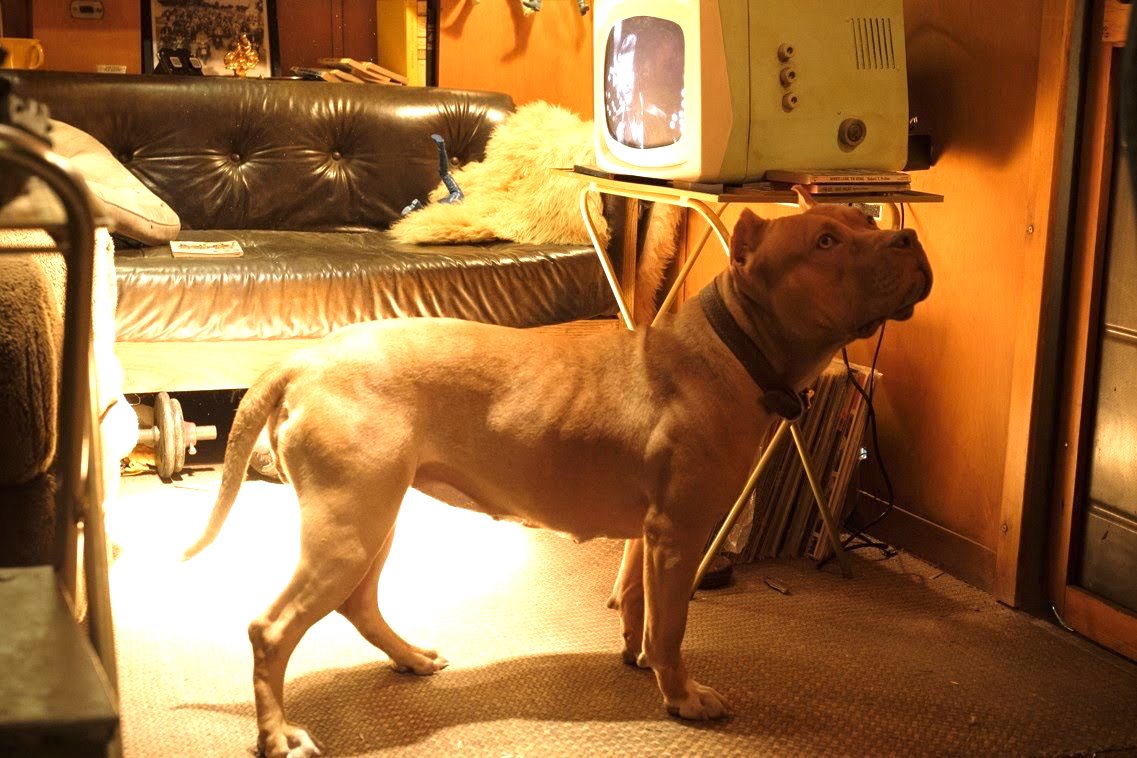
Grade B/B+
MVP: Brandy, who won the Palme Dog at Cannes this year. But it's hard to single out one person or craftsman as there are a lot of rich contributions. But Arianne Phillips (Costume Design), Barbara Ling (Production Design), Brad, Leo, and Margaret Qualley are all top notch.
Oscar Chances: Across the board (though we'd argue less so for the acting than is usual for a Tarantino picture) IF the movie is a good-sized hit and they can figure out a way to revive interest late in the year.